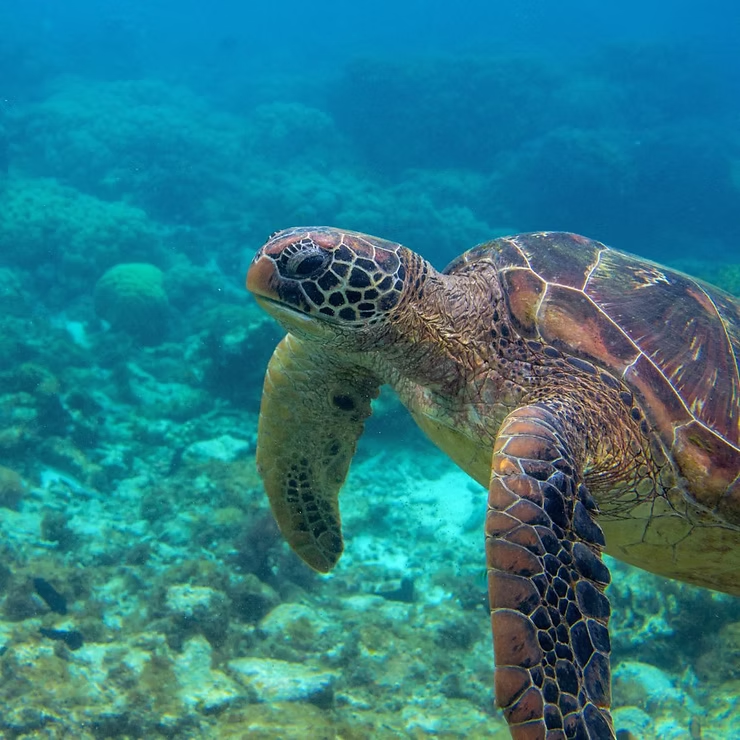Marvels of Marine Adaptation
Marine animals thrive in some of the most extreme and diverse environments on Earth. From the camouflage skills of cuttlefish to the pressure-resistant bodies of deep-sea dwellers, these adaptations demonstrate the ingenuity of evolution. Each survival strategy reflects a delicate balance between biology and environment, ensuring species can endure challenges while maintaining the health of ocean ecosystems.
The Art of Camouflage
Cuttlefish and Octopuses
Cuttlefish and octopuses are masters of disguise. Using chromatophores in their skin, they can change color and texture to blend seamlessly into their surroundings. Beyond hiding, they mimic the shapes and movements of other animals, confusing both predators and prey. Octopuses also take advantage of their soft, flexible bodies to slip into narrow crevices, making them elusive hunters and survivors.
Camouflage in Fish
- Adaptive color change allows fish to match shifting environments.
- Patterns break up outlines, making detection difficult.
- Some species reflect light to appear nearly invisible.
This ability to vanish is not a magic trick—it is a vital strategy for both ambush and defense.
Flatfish on the Seafloor
Flounders and related species illustrate how body structure can enhance camouflage. Their flattened forms and migrating eyes allow them to rest flush against the seabed, perfectly imitating sand and pebbles. This adaptation not only protects them but also positions them to ambush unsuspecting prey.
Deep-Sea Survival
Adaptations to Pressure
In the abyss, pressures exceed 1,000 times that of the surface. Many creatures evolve flexible bodies without air-filled cavities, reducing the risk of collapse. These structural changes let them master an environment few others can endure.
Speed and Swimming Strategies
- Streamlined bodies minimize drag for efficient movement.
- Fins and flippers generate power and maneuverability.
- High muscle ratios provide bursts of speed for predation or escape.
Bioluminescence
Light-producing organisms transform darkness into opportunity. They use bioluminescence to lure prey, distract predators, and signal potential mates. In an otherwise black world, these glowing displays are essential tools for survival.
Adapting to Temperature Extremes
Polar Survivors
Marine animals in icy waters rely on thick blubber, antifreeze proteins, and heat-conserving circulation systems. These adaptations enable hunting and migration in sub-zero seas.
Tropical Specialists
In contrast, tropical animals develop heat-resistant proteins and behaviors like shading or burrowing to maintain stable body temperatures. Flexibility in thermal regulation allows life to flourish from pole to equator.
Osmoregulation: Managing Salinity
Balancing salt and water is essential for marine animals. Sharks use urea to counteract ocean salinity, while estuarine species like crabs and fish adapt to fluctuating freshwater and saltwater mixes. These strategies highlight the physiological ingenuity required to maintain equilibrium in ever-changing environments.
Breathing and Respiration
Gills in Fish
Fish extract oxygen from water as it flows over blood-rich gill filaments. This efficient system supports continuous activity in oxygen-scarce environments.
Mammalian Diving
Dolphins, whales, and seals manage long dives through oxygen-rich muscles, slowed heart rates, and redirected blood flow. These adaptations allow them to explore depths inaccessible to most species.
Feeding and Foraging Strategies
- Carnivores: Sharks, groupers, and mantis shrimp deploy acute senses and specialized hunting methods.
- Herbivores: Sea turtles, manatees, and parrotfish shape ecosystems by grazing seagrass and algae.
- Scavengers: Crabs and copepods recycle nutrients, maintaining ecological balance.
Reproductive Strategies
From synchronized mass spawning to careful parental care, marine animals demonstrate diverse approaches to reproduction. Horseshoe crabs rely on external fertilization, while sharks and scorpions favor internal fertilization and live birth. These strategies maximize survival in unpredictable conditions.
Social Structures and Symbiosis
- Schooling fish confuse predators and save energy by swimming together.
- Solitary predators like great whites rely on stealth and independence.
- Symbiotic partnerships such as clownfish and anemones exemplify mutual benefit through protection and food sharing.
Defense Mechanisms
Crustaceans use hard shells, agile swimmers rely on speed, and venomous species like cone snails deploy toxins for survival. Each adaptation is tailored to the threats of its ecosystem.
Conclusion
Marine animals embody the resilience of life on Earth. Their adaptations—from camouflage to chemical communication—demonstrate evolution’s creativity in overcoming environmental extremes. Protecting these species and their habitats ensures that the ocean’s living tapestry continues to inspire and sustain future generations.
Frequently Asked Questions
How do fish camouflage themselves?
They change color, alter patterns, or reflect light to blend into their surroundings.
How do deep-sea animals survive high pressure?
They have flexible, compressible bodies and lack air-filled cavities like swim bladders.
What helps polar animals survive freezing seas?
Blubber, antifreeze proteins, and specialized circulation systems prevent freezing and conserve heat.
How do sharks balance salt levels?
Sharks retain urea in their blood to counteract seawater salinity and maintain osmotic balance.
What role do scavengers play?
They recycle nutrients by consuming dead matter, helping maintain ecosystem health.

